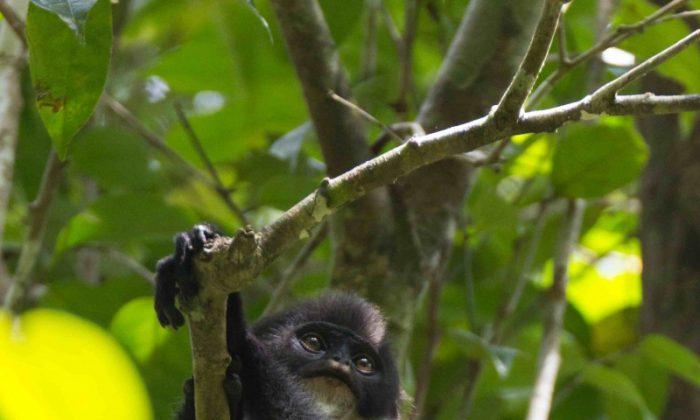Miller’s Grizzled Langur, a primate species believed to be extinct, has been rediscovered in East Kalimantan on the island of Borneo in South-East Asia.
The monkey, the scientific name of which is Presbytis hosei canicrus, was observed during an international expedition to Wehea Forest, which is home to at least nine primate species, such as the Bornean orangutan.
Previously, the langur was only known to inhabit a small area of forest in north-east Kalimantan, where its habitat is under threat from human activities.
“Discovery of P.h canicrus was a surprise since Wehea Forest lies outside of this monkey’s known range,“ said researcher Brent Loken from Canada’s Simon Fraser University in a press release. ”Future research will focus on estimating the population density for P.h. canicrus in Wehea and the surrounding forest.”
“Concern that the species may have gone extinct was first raised in 2004, and a search for the monkey during another expedition in 2008 supported the assertion that the situation was dire.”
The team confirmed the species’ presence using camera traps and sightings at mineral licks. They had to compare their observations with data from museum specimens.
“It was a challenge to confirm our finding as there are so few pictures of this monkey available for study,” Loken explained. “The only description of Miller’s Grizzled Langur came from museum specimens. Our photographs from Wehea are some of the only pictures that we have of this monkey.”
The scientists achieved their discovery through working closely with local communities and the Indonesian government.
“East Kalimantan can be a challenging place to conduct research, given the remoteness of many remaining forested areas, so it isn’t surprising that so little is known about this primate,” said Stephanie Spehar at University of Wisconsin Oshkosh in the release. “We are very grateful to our local partners.”
Although the monkey still exists in East Kalimantan, Loken thinks it is probably one of the world’s most endangered primates.
“I believe it is a race against time to protect many species in Borneo,” he said. “It is difficult to adopt conservation strategies to protect species when we don’t even know the extent of where they live.”
“We need more scientists in the field working on understudied species such as Miller’s Grizzled Langur, clouded leopards and sun bears.”
The study was published in the American Journal of Primatology on Jan. 20.










